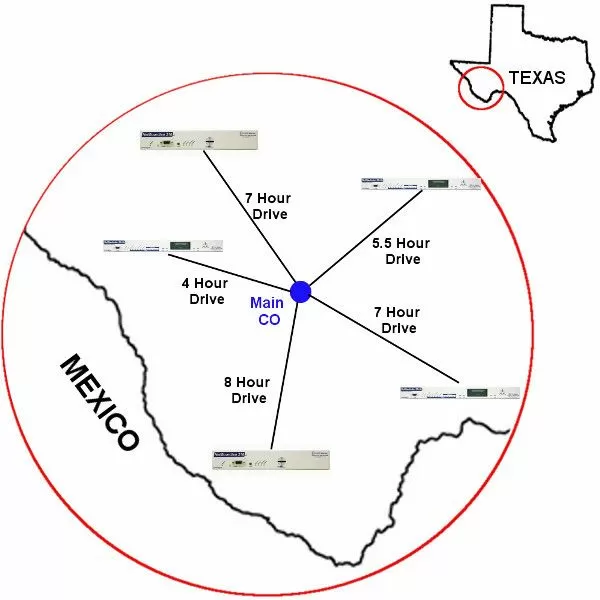Check out our White Paper Series!
A complete library of helpful advice and survival guides for every aspect of system monitoring and control.
1-800-693-0351
Have a specific question? Ask our team of expert engineers and get a specific answer!
Sign up for the next DPS Factory Training!

Whether you're new to our equipment or you've used it for years, DPS factory training is the best way to get more from your monitoring.
Reserve Your Seat Today
In the late 1950's, Neville Haynes had a vision of providing communications service to people who lived in the vast, isolated Big Bend Area of Texas. Big Bend Telephone Company was born.
In 1965, Southwestern Bell Telephone Company granted 2-way EAS to Big Bend Telephone Company. Ten years later, the Company filed an application with the FCC for a new 2 GHz microwave system. In 2005 the company diversified by becoming an internet service provider, offering high speed internet to their rural customers.
Big Bend Telephone Company continues to grow and expand with the ever-changing telecommunications industry. They're committed to providing stellar customer service and first-rate technology throughout the farthest reaches of their exchanges.
Being in a large rural area, Big Bend's sites are the very definition of remote. "We have sites that take half a day to get to," said Sablatura. "A tech will leave at 7, and might get there by 12 or 1 o'clock. It's a full day."
While distance was a challenge for Big Bend techs, it wasn't the only problem. "One of the big issues when I was hired was that nothing was consistent," said Sablatura. "You couldn't send a technician and walk them through what needed to be done because you didn't know what the site looked like."

Big Bend tried new equipment to streamline their sites and to make things more consistent. While uniformity was gained, functionality was lost. "When we upgraded from a [legacy hardware switch] to a [soft switch], we lost a lot of visibility," said Sablatura. "The [legacy switch] simply told you what was wrong. The [soft switch], not so much. You really had to dig to get it."
Site visibility is critical for a telecom company, so Big Bend Telephone Company decided it was time to start from scratch. "We tore it all out. Just completely gutted it and started over," said Sablatura.
They started with a T/Mon NOC, but quickly upgraded to the T/Mon LNX for the best possible monitoring capabilities. "When the LNX came out, we didn't have the NOC very long. DPS made us a good deal and we swapped it out and it was simple," said Sablatura. "We just pulled the old one out and put the new one in. And everything worked."
The new T/Mon LNX greatly improved the effectiveness of Big Bend Telephone's monitoring system. "We've gained more visibility. We have equipment that had never been alarmed," said Sablatura. "We had no idea until customers started calling. And now we can see everything."
This gave Big Bend Telephone the confidence they needed in DPS equipment to continue adding other monitoring equipment to their network. "We've got the T/Mon LNX, at our main CO, and then we have a bunch of the 864s and some 216s," said Sablatura. "We have 13 exchanges that all have their own COs so there's one at each one of those and then we have one at each site. That's how we monitor our fiber and stuff coming into us. And then we have remotes in remote sites."
Big Bend Telephone no longer has to wait for angry customers to call in to know that there is a problem at a site. "The T/MON will page the duty supervisor with an alarm and he will call one of us to see what's going on," said Sablatura. "If we need to dispatch somebody to the sites to take care of it, it pages the on-call supervisor."
T/Mon has even helped them keep network uptime in emergency situations. "When the power goes out, it tells us the power is out at those sites," said Sablatura. "The sites that don't have generators permanently, our guys can start taking portable generators to, so the batteries don't die."
With a reliable system in place, Sablatura attended DPS factory training to learn more about the SNMP capabilities of the T/Mon. "SNMP is going to be big for us," said Sablatura. "It is really going to open up our alarming when we get back. That T/MON, it's a powerful machine."
"The equipment is good but the tech support is really what makes it. When we call and get somebody without having to wait or open a ticket to get to somebody," said Sablatura. "And you don't spend a lot of time with the tech support. They know what they're doing."